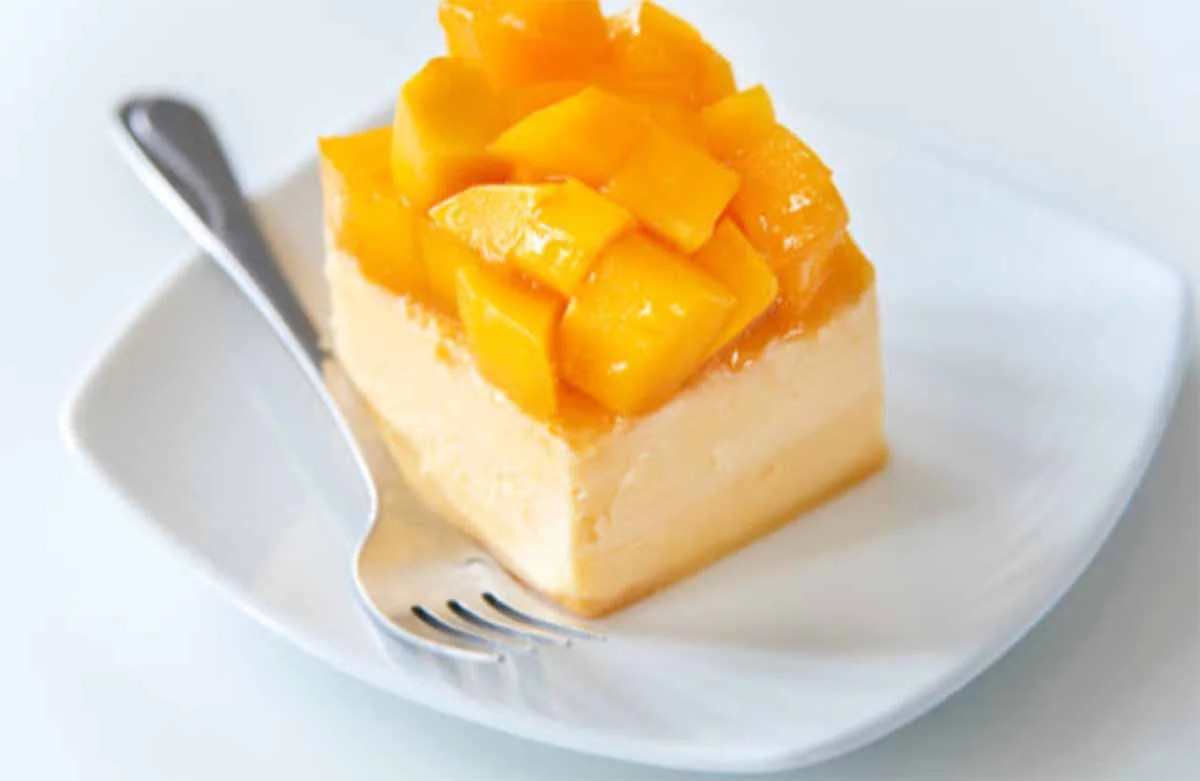Mango cheesecake is a delicious dessert that combines the tanginess of cream cheese with the sweetness of ripe mangoes. This dessert is perfect for those who love the taste of cheesecake but also want to add a tropical twist to their dessert menu. Mango cheesecake is a great dessert option for any occasion, from a casual dinner party to a formal event.
To make mango cheesecake, a graham cracker crust is typically used as the base. The crust is then topped with a creamy layer of cheesecake filling that is flavored with fresh mango puree. The cheesecake is then baked until it is set and topped with additional fresh mango slices or a mango glaze. The result is a dessert that is both creamy and fruity, with a perfect balance of sweet and tangy flavors.
History of Mango Cheesecake
Origin of Cheesecake
Cheesecake is believed to have originated in ancient Greece, where it was served to athletes during the first Olympic games in 776 BC. The recipe was passed down through generations and eventually made its way to the Romans, who added their own twist to the dish. Cheesecake became a popular dessert throughout Europe during the Middle Ages and Renaissance periods.
Mango Incorporation
Mango cheesecake is a modern twist on the classic dessert. It is believed to have originated in the United States during the 20th century. The incorporation of mango into cheesecake adds a tropical and fruity flavor to the dish.
Mangoes are a popular fruit in many parts of the world, especially in tropical regions such as South Asia and South America. They are rich in vitamins A and C, as well as fiber and antioxidants. The sweet and tangy flavor of mangoes pairs well with the creamy texture of cheesecake, making it a popular dessert among food lovers.
In conclusion, mango cheesecake is a delicious and refreshing dessert that combines the classic taste of cheesecake with the tropical flavor of mangoes. Its origin can be traced back to the United States in the 20th century, and it has since become a popular dessert around the world.
Ingredients
Mango Varieties
When it comes to Mango Cheesecake, the type of mango used can make a big difference in the flavor. Some popular varieties of mango that work well in cheesecake include Ataulfo, Alphonso, and Honey. Ataulfo mangoes are known for their sweet and buttery taste, while Alphonso mangoes have a rich and creamy flavor. Honey mangoes, as the name suggests, have a honey-like sweetness that pairs well with the tanginess of the cheesecake.
Cheese Types
The type of cheese used in a Mango Cheesecake can also affect the overall flavor and texture. Cream cheese is the most commonly used cheese in cheesecake, but other options like ricotta, mascarpone, and goat cheese can also be used. Ricotta cheese gives a light and fluffy texture, while mascarpone cheese adds a creamy and smooth consistency. Goat cheese adds a tangy and slightly savory flavor to the cheesecake.
Crust Options
The crust of a Mango Cheesecake can be made from a variety of ingredients, including graham crackers, cookies, or nuts. Graham cracker crust is the most popular choice, but a cookie crust can add a different texture and flavor to the cheesecake. Nuts like almonds or pecans can also be used to make a crust, which adds a crunchy element to the dessert.
Overall, the combination of these ingredients can create a delicious and unique Mango Cheesecake that is sure to please any dessert lover.
Preparation Steps
Crust Preparation
To make the crust for the mango cheesecake, start by crushing 1 1/2 cups of graham crackers into fine crumbs. This can be done using a food processor or by placing the crackers in a ziplock bag and crushing them with a rolling pin. Next, combine the graham cracker crumbs with 1/4 cup of melted butter and 2 tablespoons of sugar. Mix until the crumbs are evenly coated with the butter and sugar. Press the mixture into the bottom of a 9-inch springform pan. Use a flat-bottomed glass or measuring cup to press the crumbs firmly into the bottom of the pan. Bake the crust in a preheated oven at 350°F for 10 minutes. Remove the pan from the oven and let it cool completely before adding the filling.
Filling Mixture
To make the filling for the mango cheesecake, start by beating 24 ounces of cream cheese in a large bowl until it is smooth and creamy. Add 1 cup of sugar and continue beating until the mixture is well combined. Next, add 3 eggs, one at a time, beating well after each addition. Add 1/2 cup of sour cream, 1/2 cup of mango puree, and 1 teaspoon of vanilla extract to the bowl. Beat until all the ingredients are well combined and the mixture is smooth. Pour the filling over the cooled crust.
Baking Process
Bake the mango cheesecake in a preheated oven at 350°F for 45-50 minutes or until the edges are set and the center is slightly jiggly. Turn off the oven and leave the cheesecake inside for another 10 minutes. Remove the cheesecake from the oven and run a knife around the edges of the pan to loosen the cheesecake. Let the cheesecake cool completely at room temperature before refrigerating it for at least 4 hours or overnight. Serve chilled.
Serving and Presentation
Garnishing Techniques
Mango cheesecake is a delicious dessert that is perfect for any occasion. One of the best ways to enhance the presentation of this dessert is by using garnishing techniques. There are several ways to garnish a mango cheesecake, such as using fresh fruits, chocolate shavings, or whipped cream.
Fresh fruits such as strawberries, raspberries, and blueberries can be used to add color and flavor to the cheesecake. Simply arrange the fruits on top of the cheesecake in a decorative pattern. Chocolate shavings can also be used to add a touch of elegance to the dessert. To make chocolate shavings, simply use a vegetable peeler to shave off thin strips of chocolate from a chocolate bar.
Whipped cream is another popular garnish for mango cheesecake. It can be piped onto the cheesecake using a pastry bag to create a beautiful design. Alternatively, whipped cream can be served on the side of the cheesecake in a dollop.
Serving Suggestions
Mango cheesecake can be served in a variety of ways. One popular way is to cut the cheesecake into individual slices and serve them on dessert plates. Another option is to serve the cheesecake in a large dish and allow guests to serve themselves.
To add a touch of elegance to the presentation, the cheesecake can be served on a decorative cake stand or platter. This will make the dessert stand out and look more impressive.
It is also important to consider the temperature of the cheesecake when serving. Mango cheesecake is best served chilled, so it is important to keep it refrigerated until it is ready to be served.
Overall, by using garnishing techniques and serving suggestions, mango cheesecake can be presented in a beautiful and elegant way that will impress guests and make any occasion special.
Nutritional Information
Mango cheesecake is a delicious dessert that is enjoyed by many people. However, it is important to be aware of the nutritional information of this dessert. Here is a breakdown of the nutritional information for a typical serving of mango cheesecake.
Calories
A serving of mango cheesecake typically contains around 350-400 calories. This can vary depending on the size of the serving and the specific recipe used to make the dessert.
Fat
Mango cheesecake is a high-fat dessert, with a typical serving containing around 20-25 grams of fat. Most of this fat comes from the cream cheese and butter used in the recipe.
Carbohydrates
The carbohydrate content of mango cheesecake is also quite high, with a typical serving containing around 30-35 grams of carbohydrates. This is largely due to the sugar and flour used in the recipe.
Protein
Mango cheesecake is not a significant source of protein, with a typical serving containing only around 5-7 grams of protein. This is because the main ingredients in the dessert are cream cheese, sugar, and flour, which are not high in protein.
Overall, mango cheesecake is a delicious dessert that should be enjoyed in moderation due to its high calorie, fat, and carbohydrate content. It is important to be aware of the nutritional information of the foods we eat in order to make informed decisions about our diets.

